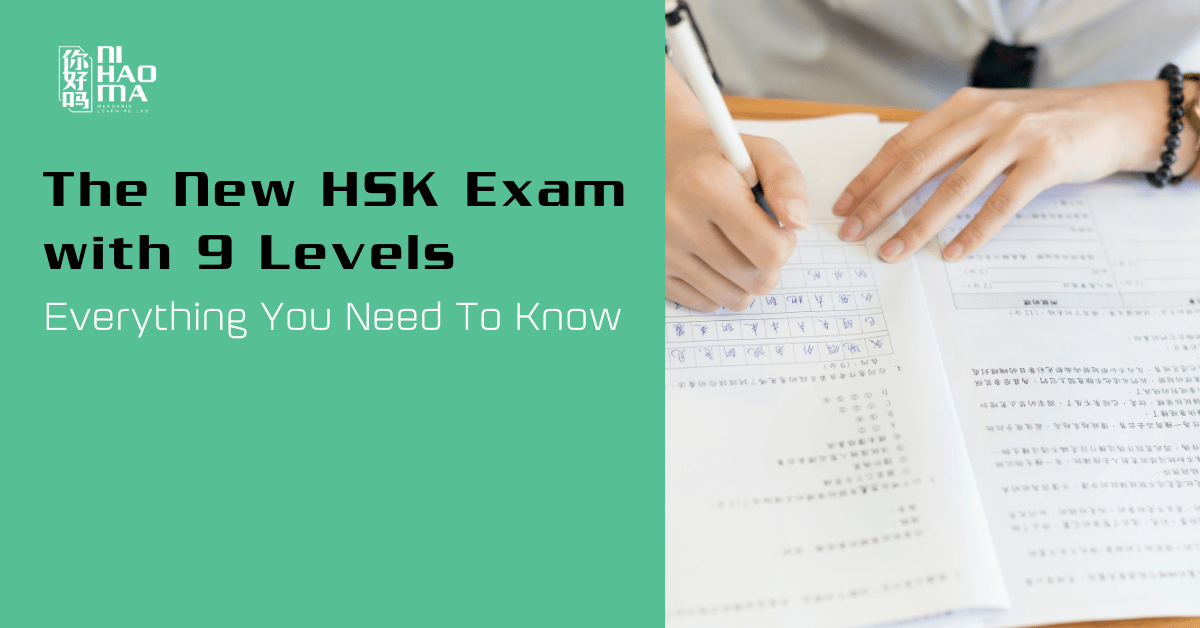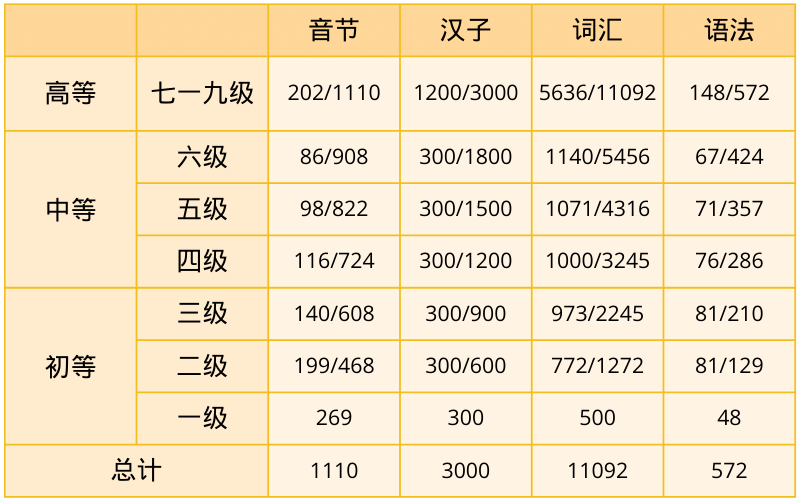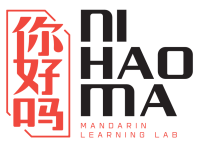The HSK (Hanyu Shuiping Kaoshi) exam has long been the gold standard for assessing Chinese language proficiency among non-native speakers. However, to better evaluate and acknowledge the Chinese proficiency of learners worldwide, the HSK, or the Chinese Proficiency Test, is undergoing a significant overhaul. The New HSK Exam is revising the way Chinese language skills are tested, expanding from six levels to nine levels.

From 6 Levels to 9 Levels: Why the Change?
Expanding the HSK exam from six levels to nine levels addresses the growing global demand for a more comprehensive and accurate assessment of Chinese language proficiency.
By introducing three additional levels, the HSK exam will provide a more precise assessment of language proficiency, enabling learners to better gauge their progress and set goals aligned to their learning objectives. As a result, the new exam will better meet the diverse needs of learners worldwide and allow for them to set achievable goals aligned with their learning objective.
What’s Different? Comparing the 6-level and 9-level HSK Exams
The transition from the six-level HSK to the nine-level HSK will offer a more comprehensive evaluation which will provide learners a more accurate assessment of their language skills.
Three-Stage Structure: Beginner, Intermediate, and Advanced:
The new HSK exam is structured into three distinct stages: Beginner, Intermediate, and Advanced. Each stage is further divided into three levels, with specific language skills and abilities assessed at each level. This structured approach allows for a more precise evaluation of a learner’s proficiency, enabling them to set achievable goals and track their progress more effectively.
| Beginner | Intermediate | Advanced |
| HSK 1 | HSK 4 | HSK 7 |
| HSK 2 | HSK 5 | HSK 8 |
| HSK 3 | HSK 6 | HSK 9 |
Comprehensive Four-Dimensional Evaluation:
Unlike the previous HSK, which primarily focused on basic language proficiency, the new HSK introduces a comprehensive four-dimensional evaluation. This evaluation encompasses syllables, characters, vocabulary, and grammar, ensuring a well-rounded assessment of language skills. By incorporating these four dimensions, the new exam aims to provide a more accurate representation of a learner’s overall language competency.
Increased Vocabulary and Grammar Requirements:
The new HSK exam places a greater emphasis on vocabulary and grammar proficiency. The vocabulary requirements have seen a substantial increase, particularly at the higher levels. For example, while the old HSK Level 6 required knowledge of around 5,000 words, the new HSK Level 9 demands mastery of over 11,000 words. This significant increase in vocabulary requirements reflects the need for advanced learners to communicate effectively in various professional and academic contexts.
| 9-level HSK | 6-level HSK | ||
| Beginner | HSK 1 | 500 | 150 |
| HSK 2 | 1,272 | 300 | |
| HSK 3 | 2,245 | 600 | |
| Intermediate | HSK 4 | 3,245 | 1,200 |
| HSK 5 | 4,316 | 2,500 | |
| HSK 6 | 5,456 | 5,000 | |
| Advanced | HSK 7, 8, 9 | 11,092 |
Advanced Levels for Higher Education and Research:
One of the most notable additions to the new HSK is the introduction of advanced levels (Bands 7 to 9) specifically designed for those seeking higher Chinese language and literature education or pursuing academic research in sinology (the study of Chinese language, literature, and culture). These advanced levels are essential for individuals pursuing a master’s degree or Ph.D. in Chinese-related fields, as they assess the advanced language skills required for academic and research purposes.
By incorporating these significant changes, the new HSK exam aims to provide a more accurate and comprehensive assessment of Chinese language proficiency, aligning with international standards and better serving the diverse needs of learners worldwide.
To provide a comprehensive understanding of the requirements for each level of the new HSK exam, let’s delve into a detailed breakdown.
Detailed Breakdown: What You Need for Each HSK Level?
In a document issued by the International Chinese Education (世界汉语教学 shìjiè hànyǔ jiàoxué), they further outline the new proficiency standards for all the levels.

The new HSK exam is structured into three distinct stages: Beginner, Intermediate, and Advanced. Each stage is further divided into three levels, with specific language skills and abilities assessed at each level.
Beginner Stage (Levels 1-3):
This stage focuses on equipping learners with basic vocabulary, grammar, and communication skills for everyday situations.
HSK Level 1:
- Recognize and use around 300 commonly used Chinese characters
- Understand approximately 500 words
- Engage in simple conversations about familiar topics
- Introduce themselves and others
- Handle basic greetings and expressions
HSK Level 2:
- Recognize and use around 600 characters
- Understand approximately 1,272 words
- Communicate basic information related to personal and family life, shopping, local geography, and employment
- Use more vocabulary and grammar structures than Level 1
HSK Level 3:
- Recognize and use around 900 characters
- Understand approximately 2,245 words
- Engage in conversations about familiar topics
- Describe experiences and events
- Express opinions
- Handle basic written materials like menus, signs, and simple instructions
Intermediate Stage (Levels 4-6):
This stage is designed for intermediate learners and assesses more advanced language skills, including reading comprehension, writing abilities, and proficiency in dealing with complex conversations.
HSK Level 4:
- Recognize and use around 1,200 characters
- Understand approximately 3,245 words
- Comprehend and produce written and spoken materials on various topics like work, study, and daily life
- Participate in discussions and handle more complex language tasks
HSK Level 5:
- Recognize and use around 1,500 characters
- Understand approximately 4,316 words
- Understand and express themselves fluently on a wide range of subjects, including social and cultural topics
- Comprehend longer texts like news articles and literary works
- Engage in detailed conversations
HSK Level 6:
- Recognize and use around 1,800 characters
- Understand approximately 5,456 words
- Understand and produce complex written and spoken materials
- Handle professional and academic tasks
- Communicate effectively in various contexts
Advanced Stage (Levels 7-9):
This stage is aimed at advanced and proficient learners, evaluating higher-level language skills such as understanding and producing written and spoken materials on abstract topics, as well as the ability to communicate effectively in various professional and academic contexts. Especially, the evaluation for HSK levels 7 to 9 will be conducted through a single comprehensive examination, unlike the separate exams for the lower proficiency levels.
HSK Level 7, 8, 9:
- Recognize and use around 3,000 characters
- Understand approximately 11,092 words
- Comprehend and express abstract ideas
- Have a near-native command of the Chinese language
- Communicate with exceptional fluency and accuracy in all contexts, including professional and academic analysis
It’s important to note that these character and vocabulary requirements are approximate and may vary slightly across different exam sessions. Additionally, the new HSK exam places a strong emphasis on practical language skills and the ability to communicate effectively in various contexts, rather than solely relying on rote memorization of vocabulary and grammar rules.
Is This a Positive Change?
The overhaul of the HSK exam is more than just a format change; it’s a strategic enhancement of the Chinese language proficiency assessment. This update aims to align the test more closely with practical language use and educational trends.
- The new structure provides a detailed assessment across various proficiency levels. It’s designed to gauge practical language skills more effectively than before.
- This change is rooted in the evolving needs of Chinese language learners worldwide. It reflects a global trend towards more application-oriented language learning.
- By including advanced levels and a broader vocabulary, the new HSK caters to diverse learning goals. From basic communication to academic research, it covers a wide spectrum.
The introduction of nuanced levels in the new HSK represents an advancement in language testing. It acknowledges the complexity and richness of the Chinese language, catering to a more diverse group of learners.
When will the New HSK Exam Changes take effect?
The transition to the new nine-level HSK exam is a significant undertaking, and its implementation will occur in phases over several years. While the precise timeline may be subject to adjustments, here’s an overview of the expected rollout:
Firstly, to support the revised exam structure, a new set of HSK textbooks and learning materials aligned with the nine levels will be released in 2024. These resources will serve as invaluable study guides for learners preparing for the revamped exam.
Regarding the exam itself, the new version of HSK levels is expected to be introduced gradually between 2024 and 2026. This gives learners and educators time to transition to the new system. The complete replacement of the current HSK exam by the new nine-level system is expected to be finalized around 2027.
The exact timeline for the complete rollout of the new HSK exam may be subject to adjustments based on various factors, such as the preparedness of testing centers, availability of learning resources, and feedback from stakeholders. Continuous updates from official sources, such as the Confucius Institute Headquarters (Hanban), will provide the most accurate and up-to-date information as the implementation progresses.
Is The Current HSK Certification Still Relevant?
For those who have already obtained HSK certifications under the current system, there is no need to worry. The current HSK certification will remain valid and recognized until the complete transition to the new HSK exam has been made. Learners who have invested time and effort in preparing for and passing the current HSK levels can continue to use their certifications as proof of their Chinese language proficiency.
The current six-level HSK exam format will continue to be offered alongside the new nine-level exams until the transition period is completed around 2027. By this time, the old six-level format is likely to be discontinued, and the revised exam structure will become the sole standard for evaluating Chinese language proficiency worldwide.
How to Prepare for This Change?
With the changes introduced in the new HSK exam, it’s crucial for learners to adapt their preparation strategies accordingly. Here are some tips to help you prepare effectively for the updated exam format:
1. Familiarize yourself with the new exam format and content:
Consult official resources and reputable study materials to understand the structure, question types, and content areas covered in the new HSK exam.
Seek guidance from experienced Chinese language teachers or tutors who are knowledgeable about the new exam’s requirements.
2. Assess your current language proficiency level:
Take practice tests or seek professional evaluation to determine your current proficiency level accurately. Take the first step with a Free Assessment Test at Ni Hao Ma – Mandarin Learning Lab, which provides you with valuable insights into your strengths, areas for improvement, and the most suitable level to begin your studies.
By understanding your proficiency level, you can set realistic goals for the new HSK levels based on your assessment and desired language learning outcomes.
3. Incorporate a variety of learning resources:
Utilize a combination of textbooks, online courses, language apps, and practice tests to develop well-rounded language skills.
Engage in immersive learning experiences, such as watching Chinese movies, listening to podcasts, or joining language exchange programs.
4. Focus on developing specific language skills:
Depending on your target HSK level, prioritize improving your listening, reading, writing, and speaking skills accordingly.
Practice communication skills by engaging in conversations with native speakers or language partners.
Ni Hao Ma Mandarin Learning Lab’s HSK course is designed to prepare you for the latest updates in the HSK exam.
Learn more about our HSK courses at Ni Hao Ma Mandarin Learning Center.



